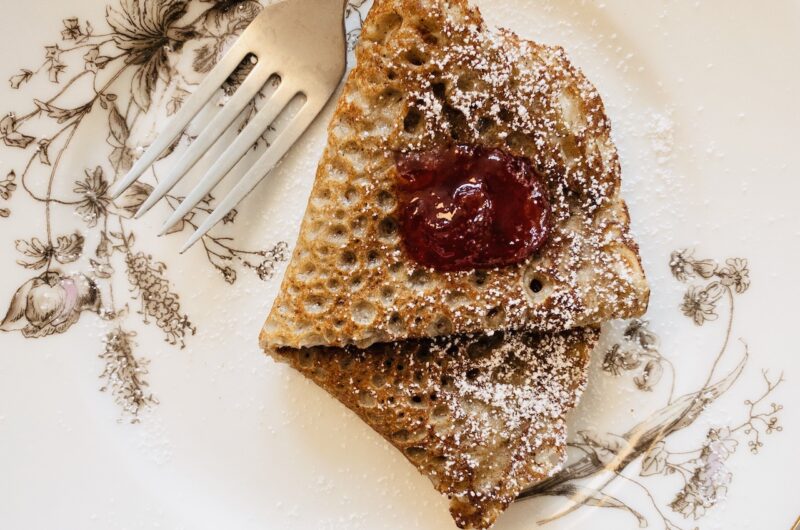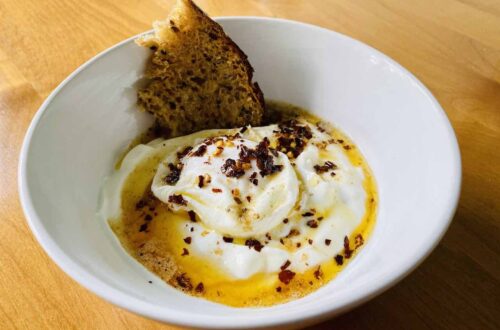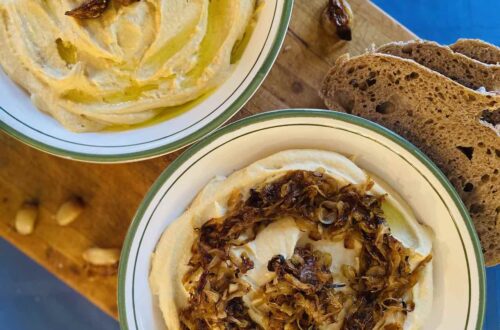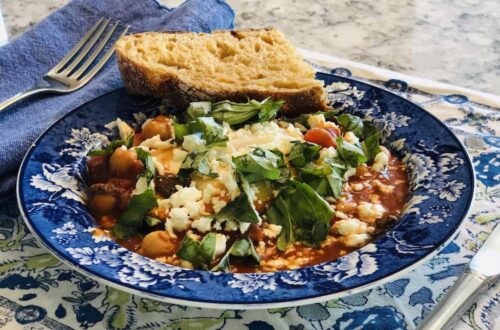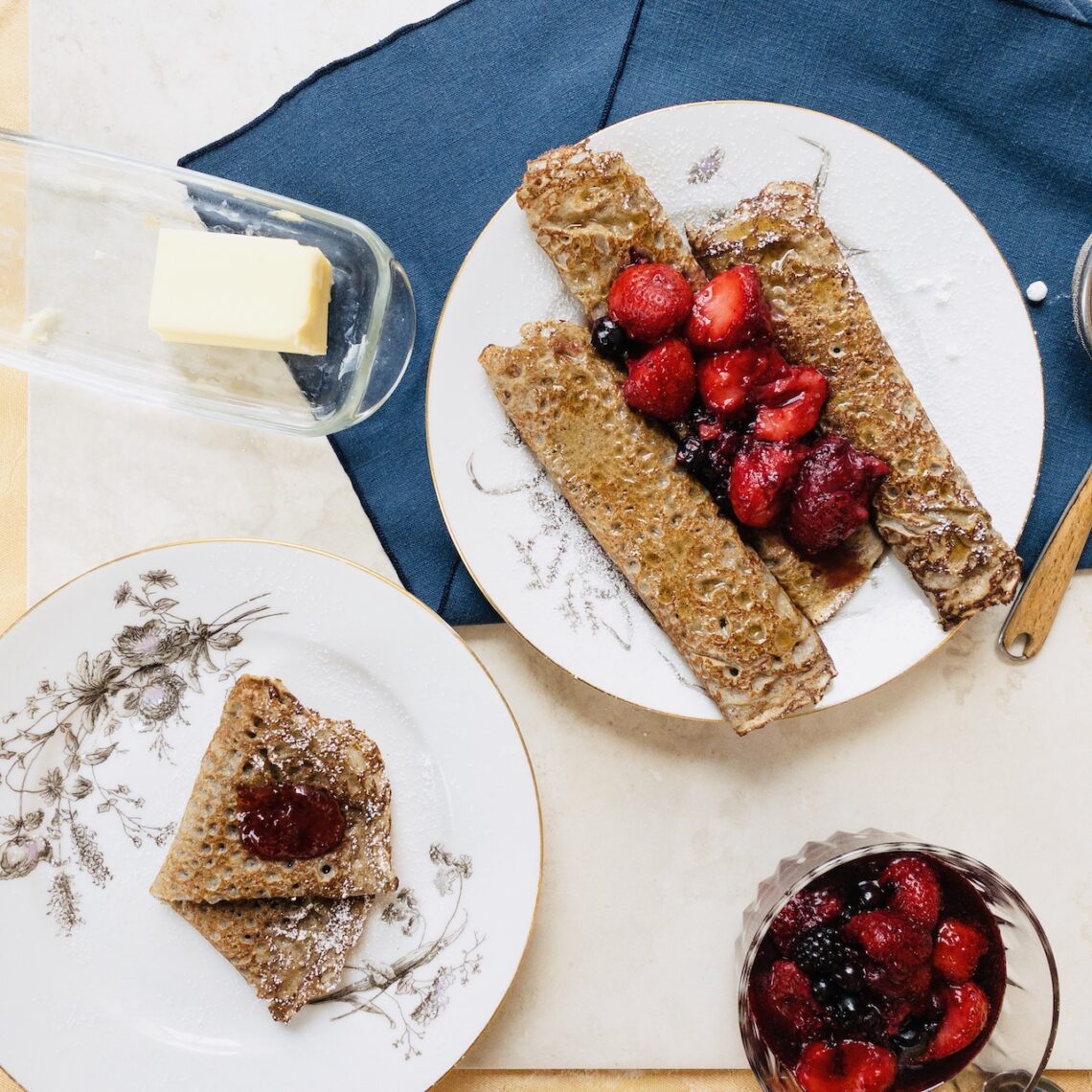
Buckwheat Crepes
A few years ago, my parents started a tradition of cooking a big breakfast every Sunday. Whenever I was home, I thrilled at the idea of pancakes and a peaceful moment during the morning, as the sun shines into the kitchen, shimmering on the countertop. After being home for many of these Sundays during the pandemic, I began to experiment. Eggs and pancakes are great, but variety is essential. The challah I like to make never lasted until Sunday for French toast, and I still haven’t found a frittata I love. That’s where these buckwheat crepes came in – they are simple, fast, and pretend to be healthy.
I found this recipe through a circuitous route. Like everyone else, I hopped on the sourdough bandwagon in the early days of the pandemic. In Sarah Owens’ fantastic cookbook, Sourdough, there is a recipe for buckwheat crepes – inspired by one of my favorite food bloggers, David Lebowitz. After hunting down the original recipe on his blog, I knew I had to try it. The crepes are thin but have a deep nutty flavor that tastes great with maple syrup, fruit, or jam.
As I (try to) continue to post here, I’d like to broaden the ingredients that I focus on and to intersperse some of the more depressing subjects with positive and guilt-free ingredients. In that spirit, here is a post on buckwheat. But what is buckwheat? Buckwheat is a type of pseudocereal, a seed that is “consumed as cereal grains but don’t grow on grasses.” (Quinoa and amaranth are also pseudocereals.) This means that buckwheat is not wheat – in fact, it is gluten-free and related to rhubarb and sorrel.
People have cultivated buckwheat for over 8,000 years. Back at its peak in the late nineteenth century, the US grew over one million acres of buckwheat. Today, buckwheat is grown on only about 60,000-70,000 acres in the US, mainly in the northeast, and on about 4 million acres in the world. (For comparison, in 2020 it was estimated that 44.3 million acres of wheat were grown in just the US.)
Buckwheat’s strength is how hardy it is, but it has been out-produced by wheat. Buckwheat can grow in rough terrain and infertile soil. Its root system can help to stop erosion, it stops weeds from growing, and it attracts useful insects like bees. It also has a short growth period, which makes it useful for inter-season growth. However, it has a comparatively low yield. With the introduction of nitrogen fertilizer, wheat’s yield increased, leaving buckwheat behind.
These days, buckwheat is mainly grown for its seeds – specifically, the “starchy white endosperm of its seeds” – which are used for foods such as blini and soba noodles. Buckwheat is mainly found in cuisine from the northern hemisphere: in Russian, central and eastern European, Kazakhstani, Chinese, and Japanese food. (Think soba noodles, blini, kasha and, of course, as flour). Buckwheat flour has also become much more common and is available at many grocery stores. I bought the buckwheat I’ve been using from Maine Grains, a small producer in Maine. I don’t know much about the company other than that they claim to produce organic grains (and pseudocereals) that are “relocalizing grain production and milling.”
From everything I’ve learned, buckwheat seems like one of the more guilt-free ingredients out there. I plan to keep using it and experimenting with it in breads, cakes, and cookies – and of course, in a blueberry clafoutis recipe I hope to post soon.
Buckwheat Crepes
4
servings30
minutesAdapted from David Lebowitz’s Buckwheat Crepe Recipe. I have changed the proportions of buckwheat and all-purpose flour from David Lebowitz’s original recipe. But feel free to experiment and use more (or less) all-purpose flour than I call for here.
Ingredients
1 cup buckwheat flour
1/4 cup all-purpose flour
2 cups whole milk
1 tablespoon sugar
1/4 teaspoon sea salt
3 tablespoons unsalted butter (plus 3-4 tablespoons butter for cooking)
3 large eggs
Directions
- In a large mixing bowl, whisk all the ingredients together. (Alternatively, blend them in a food processor.)
- Heat a medium-sized pan (cast-iron works well) over medium heat. Add about one teaspoon of butter to the pan, let is melt, and then add a quarter cup of batter to the pan. Spread the batter around with the back of a ladle or, if using a lighter pan, by picking up the pan and moving it so that the batter spreads evenly in a 9-inch circle.
- Cook the crepe until the sides begin to brown and the crepe begins to solidify in the center. This can take 20-30 second or a couple of minutes depending on the heat and your pan. Once the sides have browned, flip the crepe and cook for another 20-30 seconds. (You’ll know that the crepe is ready to be flipped when your spatula can get under it easily without the crepe falling apart or breaking.)
- Repeat until you have used all the batter. Serve warm with fruit, compote, maple syrup, or jam. The crepes would also be delicious with savory fillings.


